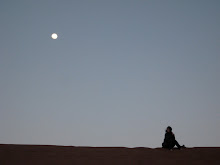NEW MUSEUM | JULY 7 – AUGUST 28, 2011
What’s in an elbow? The way it moves; the stretching of flesh over bones, then its gathering in tight wrinkles mid-limb. A knee: that complex, delicate system of ligaments that makes walking, running, dancing possible. But these images are non-specific—what of your own elbow? Your sister’s knee? Have you ever really looked at the wrist of someone you admire? I once noticed the way a man I love held a glass—his hand hinging with unconscious flourish—and it made me love him more.
People show themselves through their bodies as much as their minds: if you pay attention, you can see the world through a joint. Those who make their bodies into art are creating at the intersection of what is physically innate, tragically accidental, and tirelessly practiced. Seeing the body this way—as perfectly imperfect raw material—is a postmodern practice that came about in part from Anna Halprin, when she taught workshops to future Judson founders and other amazing people on her outdoor deck in Marin county in the 1960s and ’70s. When I visited her there last fall, the now 91-year-old, whose own joints remain a supple complement to her bright and impassioned mind, said she couldn’t even watch most of today’s dancers. They mask their instrument, themselves in their bodies, with slick technical training that makes the art that interests her impossible—the physical equivalent of commercial production techniques.
Merce Cunningham spent time in Halprin’s backyard workshops during the early years. I’ve seen videos of him leaping across the deck as a young man: already brilliant, seemingly fully formed, an unmistakable individual. Where Halprin and the postmoderns were interested in everyday movements as a way to reject stylized, expressive modernism, Cunningham famously embraced chance in order to move away from the same problem. He developed a specific strain of abstraction in dance that always seemed to point to something more. He knew innately what was in an elbow; that everything was already there. His work proved one needn’t pile on storylines and dramatic expressions of humanity when working with the most basic and personal of materials, the body.
From the beginning, Cunningham was interested in how the body related to technology, including computer programs for creating and recording dances. He pioneered, with the filmmaker Charles Atlas, media-dance, which is dance specifically for the camera. Before his time as the Cunningham company’s filmmaker-in-residence (1978 – 1983), when he made 10 dance films, Atlas was an assistant stage manager for the company, and was already filming Cunningham in little experimental movement studies during breaks from rehearsal. Since then, Atlas has shown video and performance works in museums and galleries all over the world, mostly in collaboration with choreographers and performers. To name just a few: Yvonne Rainer, Marina Abramović, Michael Clark, Douglas Dunn, John Kelly, and Leigh Bowery.
Atlas’s current show, Joints Array, on view in the lobby gallery of the New Museum, is made up of his first Cunningham experiments from the early 1970s, which were shot on Super 8 color film. He revisited these images in 2009 after the choreographer’s death, creating a four-channel installation called “Joints 4tet for Ensemble”(2010), which was on view at Vilma Gold Gallery in London in April. The piece on view at the New Museum is an extended version of this original. Differently sized outdated box monitors show film-transferred-to-video loops of Cunningham that create an incredibly beautiful portrait of an artist and a man. The videos show, alternately, close up images of a wrist, knee, ankle, and elbow.
Cunningham is not dancing in the films, but moving slightly, as if exploring in each instant the possibilities and the complexities of the joint in focus. Each of the monitors is set up at the top of its own individual pole, rooted in the floor along the perimeter of either one of the two back walls of the rectangular gallery space. Different videos play on the monitors at alternating times; the result is far from an overwhelming bombardment of moving images, as might be expected from so many videos playing simultaneously. Instead, the work feels quite intimate, capturing the essence of Cunningham, while skipping extraneous outlining and obvious description. There is also a rich and nostalgic texture to the visual information that comes from the film itself and the knobby, boxy black containers that house it.
At the end of each short clip, and before the next one starts, Atlas left several frames of lead tape, a brightly dated exposure of the technology itself. This technology forms a third personified character in the space, conversing in a timeless loop with Cunningham’s joints and Atlas’s ability to capture what may be abstract in form, but never in nature. Rounding out the experience are old, unpublished ambient noise recordings by John Cage that play in a loop in the gallery. You can hear the sound of the street, a car driving by, a faint honk, or the rustle of leaves meeting up with different, random points in the films. Atlas has confessed that when he was with the Cunningham company, he balked at the chance method; here, as in much of his recent video and performance work, he has, in a way, become more of a Cageian. The structure of Joints Array contains all of the right ingredients, but it’s the way he lets it be just a little bit wild in just the right way that turns a large formal display of video recordings of body parts into a living thing.

No comments:
Post a Comment